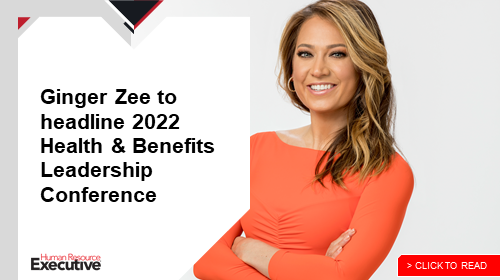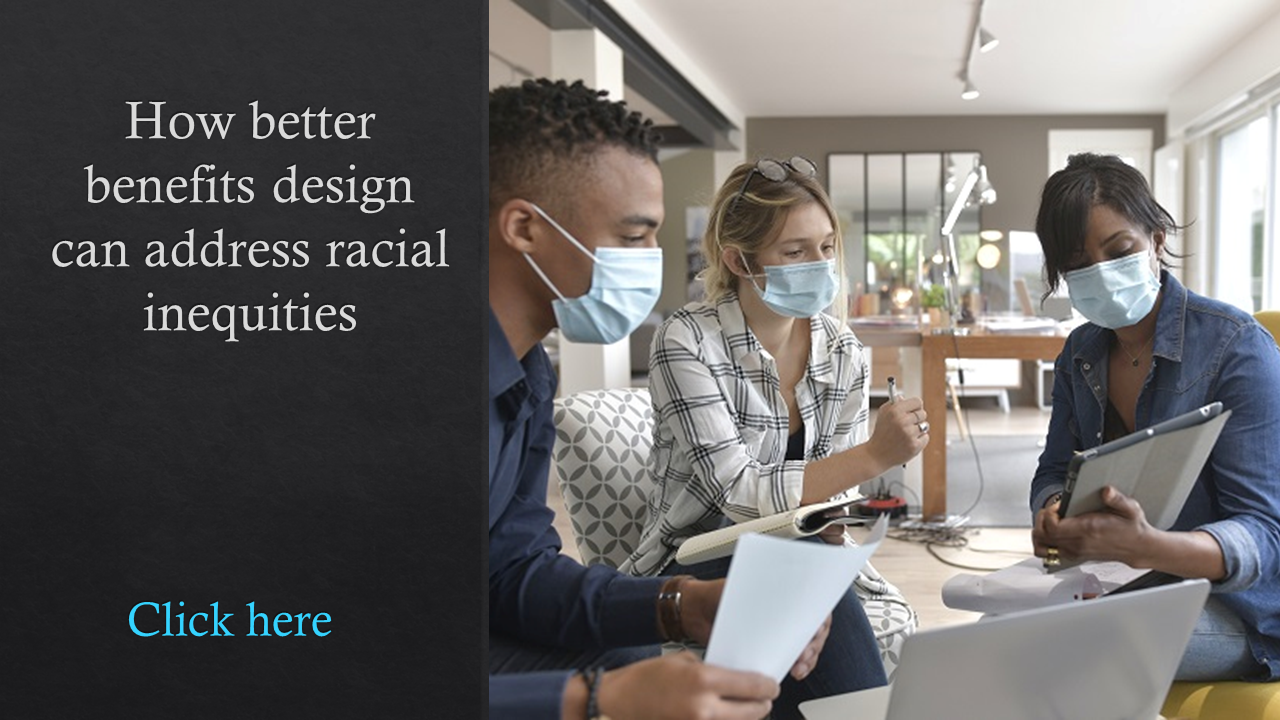Employers have long prioritized a variety of health and financial benefits as a way to help employees. But many experts believe there’s much more that needs to be done to make sure employees have healthy, happy and financially stable lives.
Enter: health equity initiatives that address workers’ social determinants of health, which include such factors as healthcare access and quality, economic stability, education access and social and community factors. Although industry experts have discussed health equity in recent years, not enough work has been done, says Seth Serxner, chief health officer and senior vice president of population health at Optum.
Like with many things, COVID-19 has contributed to shifting the conversation. The pandemic has “exaggerated financial and social isolation issues. Even if an employee was still employed, maybe their partner wasn’t,” Serxner says, or they had to help family or friends. “And so everyone became more financially stressed. And then, of course, social distancing, social isolation, exacerbated things for those people that were already on the bubble to really marginalize them.”
Although health equity initiatives and employees’ social determinants of health have not traditionally been big priorities among organizations, the good news is that stands to change, says Serxner, who will speak about health equity April 5 at HRE’s Health & Benefits Leadership Conference along with Elizabeth Kraft, medical director, population health, Colorado Health Neighborhoods at Centura Health. Register for the event here.
Addressing health equity can decrease healthcare costs, boost employee satisfaction, improve overall health and more. By not addressing the issue, employers have a lot to lose. “As we see this shift in human capital approach, and the tight labor force, there’s a risk of losing your people if you don’t do something about this, if you don’t visibly address it,” Serxner says.
Ahead of his session at HBLC, HRE spoke to Serxner about what health equity means, how employers can address it and more.
HRE: First of all, what is your definition of health equity?

Serxner: A lot of employers have been talking about health equity, and oftentimes when they talk about it, they think of health disparities, those kinds of disproportionate services to African-Americans and others. But really, when I think about health equity, it is this aspirational idea where everyone has equal access to services and healthy lifestyles. And that’s really a function of a number of different things—it’s a function, on the health system side, around health disparities and health literacy, the idea of being able to understand the system and navigate it confidently.
On the other side of the equation is social determinants—the kind of situational context in which people live and work and play, as well as something that we call personal determinants of health, which are really about resiliency and a function of a person’s sense of purpose, their positive attitude and their connection to others.
HRE: Where do we stand with health equity right now? Do people have access to the care that they need? And do they understand it?
 Serxner: There are significant gaps. I think where we are right now is some recognition, some data to support why we should explore this even more than the obvious moral reasons. We are in an area where we need more data. For example, it’s very challenging to get race, ethnicity and primary language on everyone so we could even document the disparities. In some cases, in terms of health literacy, we’re not addressing it in a really specific and dramatic way. And social determinants are now starting to be acknowledged by markets. They were very big in the Medicaid market, but in the employer market, employers are just realizing now, “Hey, you know, even though you get a regular paycheck and benefits, we have a lot of our population that has a lot of these vulnerabilities, and we need to address it.”
Serxner: There are significant gaps. I think where we are right now is some recognition, some data to support why we should explore this even more than the obvious moral reasons. We are in an area where we need more data. For example, it’s very challenging to get race, ethnicity and primary language on everyone so we could even document the disparities. In some cases, in terms of health literacy, we’re not addressing it in a really specific and dramatic way. And social determinants are now starting to be acknowledged by markets. They were very big in the Medicaid market, but in the employer market, employers are just realizing now, “Hey, you know, even though you get a regular paycheck and benefits, we have a lot of our population that has a lot of these vulnerabilities, and we need to address it.”
HRE: Walk me through how employers can address their employees’ social determinants of health. What’s the best thing for them to do?
Serxner: That’s the big question. There are a couple of things. One is, if you think about a framework of social determinant solutions, think about it in terms of foundational, which are those things that are embedded in what a vendor partner will do, and then interventional—all those things that the employer can do. So the vendor partner, for example, Optum or United, when you have an advocacy program or a clinical program, in your clinical dashboard, through the data, you can alert that advocate or nurse to the idea that that person may have a social risk. And you might address that with that person. You confirm that they have that risk, and then you make a referral to various resources, whether it’s community resources or employer-based resources, and then close the loop. Confirm that they actually took advantage of that.
On the other side is interventional—what employers can do. The employer today has lots of things that they do already, probably an EAP program, financial coaching around budgeting and credit management, maybe some legal service issues. They might have childcare services, they might have education programs, where they’re helping people get a high school GED or a college degree. So a lot of things they can remind people of.
Likewise in food access, maybe they want to create local food pantries at a work location, where you have an office supply to destigmatize it. You have people contribute clothes or office supplies or toys their kids grew out of.
 For social isolation, you can create wellbeing challenges where it’s a call-a-friend-once-a-week kind of thing, or a buddy system, or employee resource groups, I’m a big fan of those peer groups where people talk to each other and share resources. We really like to have employers do the analytics, do an inventory of their programs and services aligned with these risks and see where their gaps are, and where they can enhance things—look at benefit design and then look at partnering with their vendors.
For social isolation, you can create wellbeing challenges where it’s a call-a-friend-once-a-week kind of thing, or a buddy system, or employee resource groups, I’m a big fan of those peer groups where people talk to each other and share resources. We really like to have employers do the analytics, do an inventory of their programs and services aligned with these risks and see where their gaps are, and where they can enhance things—look at benefit design and then look at partnering with their vendors.
HRE: Why is it important for employers and HR and benefits leaders to prioritize social determinants and to understand that among their employee populations?
Serxner: It’s so interesting; I’ve been in this industry a long time and I did not focus on it for a long time. I felt like it was pretty academic. But as I started to talk to employers, they said a couple of things that were really interesting to me. One, [when I asked why they were interested in social determinants], they said, ‘Well, our people are in the communities. They’re already volunteering, they’re already doing things. Plus, our company is philanthropic, and our company has a mission statement to help people. It’s just that we haven’t sewn it all together.’ And I said, ‘So if I talk to you about a program to address diabetes, and we talk about centers of excellence and condition management and lifestyle management, should I also talk about access to food and transportation, housing?’ And they said, ‘Absolutely, yes.’
 And it really surprised me. So as I moved forward on this, and I started to do the research, we’ve got one study, in particular, with more than a million employee members in it that shows that people with social risks use inpatient services about 20% or 30% more, they use the emergency room twice as much, and they have significantly higher [per member, per month] costs when they qualify for the clinical program. There’s a total cost of care reason, as well as what we could call an engagement reason, as well as kind of all the moral and philosophical reasons.
And it really surprised me. So as I moved forward on this, and I started to do the research, we’ve got one study, in particular, with more than a million employee members in it that shows that people with social risks use inpatient services about 20% or 30% more, they use the emergency room twice as much, and they have significantly higher [per member, per month] costs when they qualify for the clinical program. There’s a total cost of care reason, as well as what we could call an engagement reason, as well as kind of all the moral and philosophical reasons.
HRE: Are we seeing a shift in focusing on the conversation and prioritizing it, then? Is that becoming a bigger priority among organizations?
Serxner: I definitely think so. I’ve now spent the last two years focused on this. Last year, I had more than 100 different employer conversations on the topic, as well as numerous conversations with consultants. And it is top of mind; it’s a different way of looking at things. And they’re recognizing that it’s a problem and they should do something about it. We knew there was a problem—I had one client who said to me, we had heard someone was living in their car—we just didn’t know how to do anything about it.
I definitely think that employers are focused on it; they want to do something about it. And I think that it’s a really important piece of an overall human capital strategy, particularly, to have an overall wellbeing strategy.

